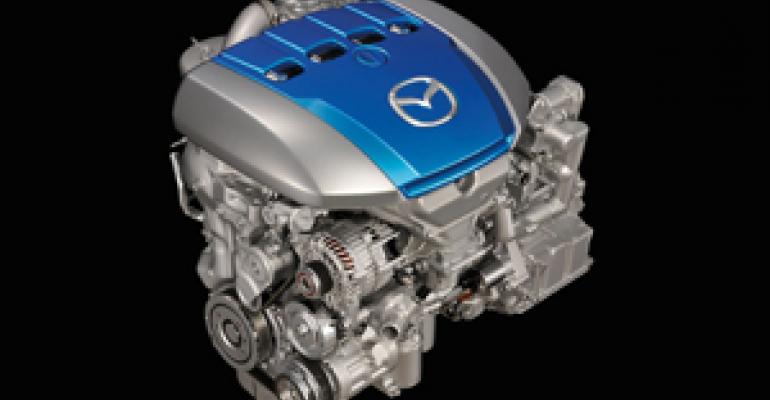
VANCOUVER, BC, Canada – Mazda welcomes the recent news that General Motors will offer a diesel in its Cruze C-car, betting the publicity will cast a positive light on the new diesel coming from the Hiroshima, Japan-based auto maker, a top executive says.
“I loved GM’s decision. Bring it on,” Robert Davis, senior vice president-U.S. operations, tells Ward’s at a media event here. “It will create interest, and a rising tide lifts all boats.”
Mazda’s twin-turbo 2.2L Skyactiv diesel engine, or Skyactiv-D, is set to debut late next year on a yet-to-be-announced vehicle.
Davis says Mazda is confident its diesel will be a worthy alternative to hybrid-electric vehicles, due to its good fuel economy and performance characteristics.
“The customer doesn’t have to compromise on driving enjoyment and performance and give up the economy side of it,” he says.
Mazda says Skyactiv-D will achieve about 43 mpg (5.4L/100 km) on the highway, a 20% improvement over the 2.2L diesel engine the auto maker currently offers in overseas markets.
The extra performance was eked out by “reinventing” some key diesel technologies, says Kiyoshi Fujiwara, Mazda executive officer-product planning and powertrain development.
A key driver to the increased efficiency was a 14:1.1 compression ratio, which Fujiwara says is the lowest of any production passenger-car diesel on the market.

Typically, diesels have high compression ratios, which ensure good cold starts and stable combustion.
But the low ratio allowed Mazda to optimize combustion timing and more efficiently mix air and fuel. Because combustion is more uniform with a lower ratio, nitrous oxide and soot emissions are minimized, negating the need for an expensive aftertreatment system.
An added benefit of the low ratio is that more energy is squeezed out of every drop of fuel than in a conventional diesel, Fujiwara says.
To overcome the issue of cold starts and unstable combustion typically caused by low compression ratios, Mazda equipped the Skyactiv-D with ceramic glow plugs and exhaust variable lifts, allowing internal recirculation of hot exhaust gas into the combustion chamber.
Glow plugs carry out the first combustion cycle, which is enough to raise the exhaust gas to a sufficient temperature.
Once the engine starts, the exhaust valve does not completely close as usual during the intake stroke.
Instead, it remains slightly open to allow some exhaust gas to reenter, thereby increasing the air temperature in the chamber. This process facilitates subsequent ignition of the air-fuel mixture and prevents misfiring.
“Variable valve lift is quite unique on a diesel,” Fujiwara says.
The lower compression ratio also reduces pressure, resulting in less strain on the engine, allowing Mazda to reduce weight with thinner walls on the cylinder heads and add an integrated exhaust manifold. Together, the changes reduce weight 6.6 lbs. (3 kg), compared with Mazda’s current diesel.
A new aluminum cylinder block shaves off another 55.1 lbs. (25 kg), the auto maker says.
Fujiwara says Skyactiv-D will help Mazda make inroads in its Japanese home market, where most buyers today are opting for hybrids.
In the U.S., Davis says he expects Skyactiv to be a popular choice among Mazda buyers, citing the success Volkswagen has had with its diesel offerings here.




